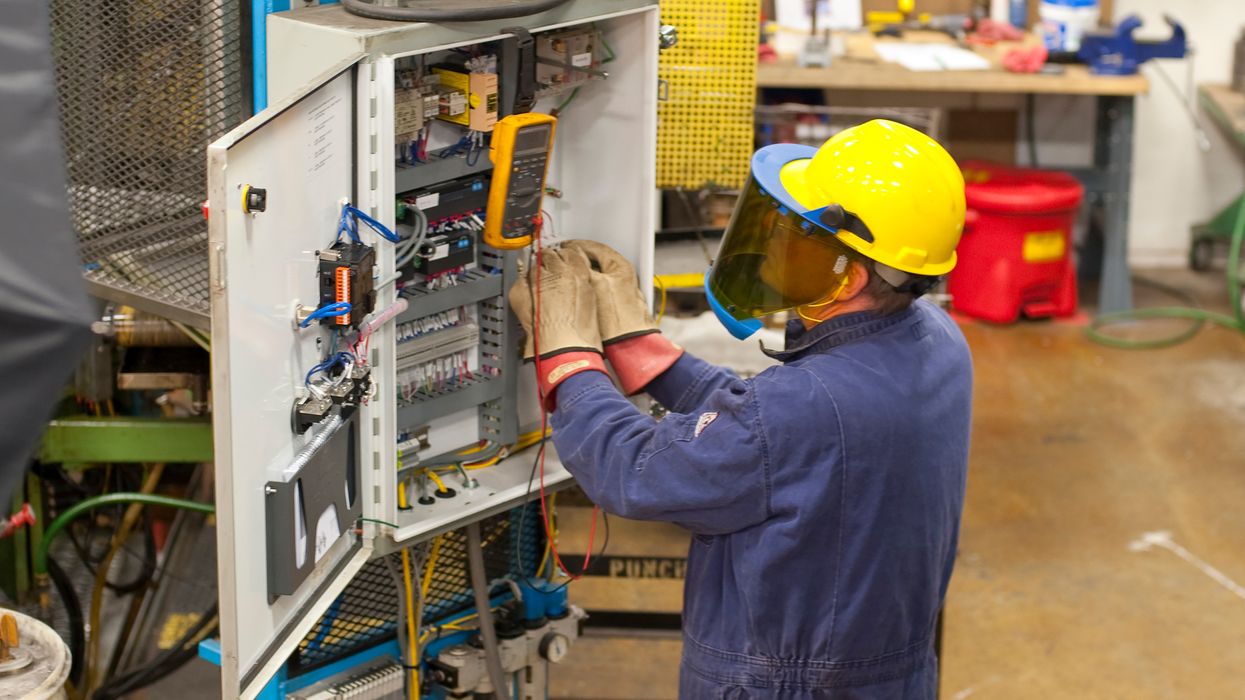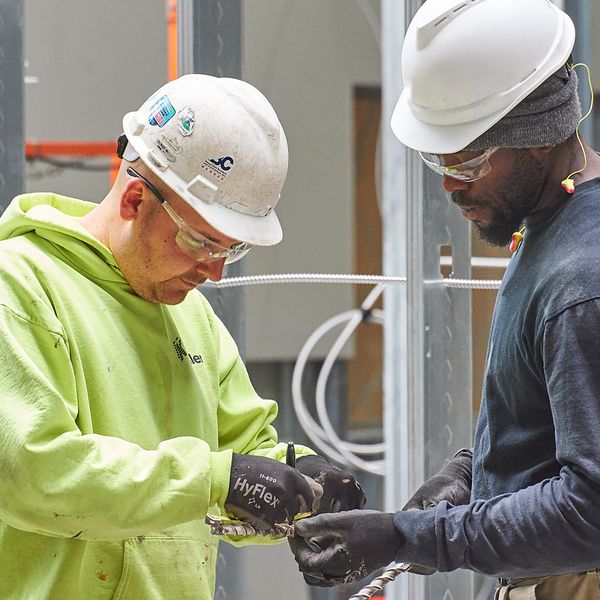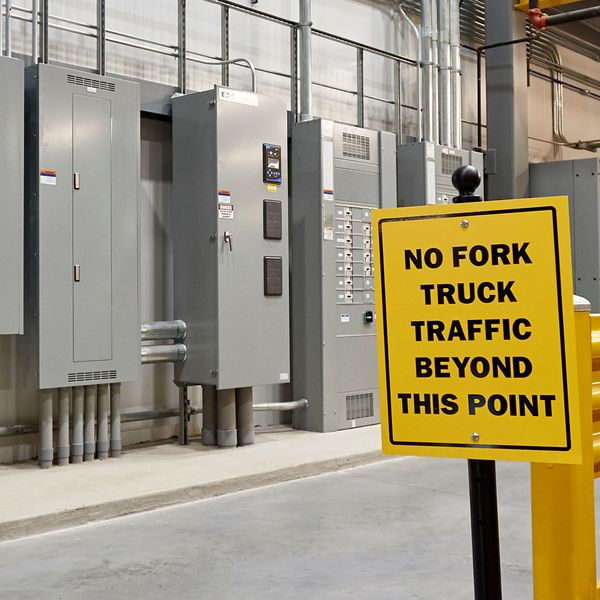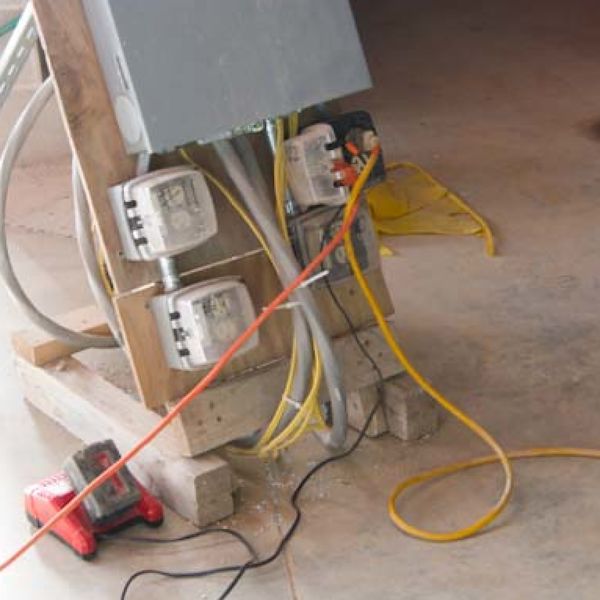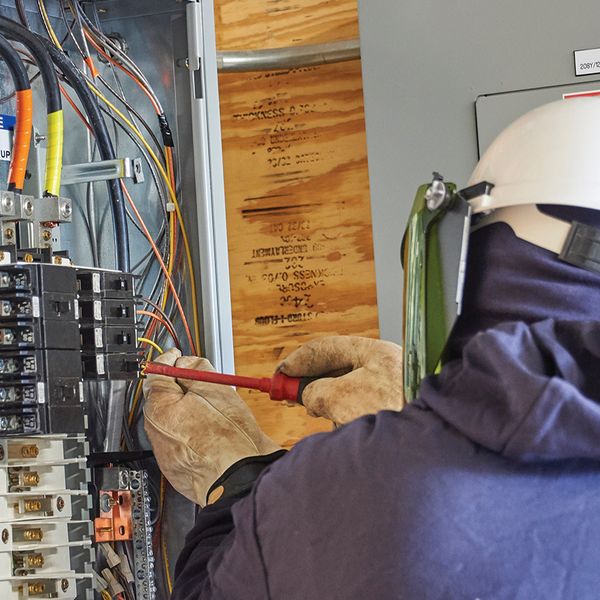How electrical training keeps maintenance workers grounded
Did you know that your personnel responsible for maintaining machinery may come in close proximity to electrical circuits that require them to have electrical training? In fact, this is not unusual at many companies.
Even if you use licensed electrical contractors to do your electrical work, your maintenance workers may need similar training to avoid serious injury. Read this article to find out why!
Real electrical situation
What would you do to prevent this situation? A factory worker and his coworker were employed at a plant that used thermoforming machines to make plastic inserts for cosmetic packaging. These machines created a great deal of residual heat, so management ordered the installation of fans to exhaust the heat from the room. The two employees were working from a scissor lift to do the “non-live” installation of the wiring for the fans, which would later be inspected, connected, and energized by a licensed electrician.
As the workers ran conduit along the ceiling of the room, they approached a partially-exposed, 480-volt, three-phase electrical bus bar that supplied power to the thermoforming machines. The worker reportedly used a voltmeter in the scissor lift to test the exposed electrical conductors at the uncovered end of the bus bar. He apparently connected the voltmeter across two of the phases, which overloaded the meter and caused it to explode.
The explosion ignited the worker’s clothing and caused an electrical breaker to trip, plunging the area into darkness. The coworker managed to lower the lift, but his own clothing ignited while trying to extinguish the worker’s burning clothing. Another employee put out the fires with a fire extinguisher. The first worker was taken to the area burn unit, where he died of complications 14 days later.
Accident prevention recommendations
Investigators concluded that to prevent similar accidents, employers should:
- Develop, implement, and enforce an electrical safety program;
- Permit only properly trained and qualified persons to carry out electrical work; and
- Inspect work areas before permitting employees to work near electrical or other hazardous equipment.
Electrical safety program
In this case, the plant used licensed electrical contractors to do their electrical work. However, the plant mechanic and other personnel responsible for maintaining machinery may come close to electrical circuits.
To ensure the safety of these workers, companies need to develop, implement, and enforce an electrical safety program. This program should include training in electrical safety practices, lockout/tagout procedures, circuit testing (to ensure that circuits are de-energized), and other safety training commensurate with the duties of the workers. This would include correctly storing electrical test equipment away from unauthorized personnel.
| Curious about lockout/tagout violations? See our Compliance Network article “Myths that cause lockout/tagout violations.” |
Qualified person
The two workers were injured in this incident as they installed an electrical conduit near an exposed electrical bus bar. The workers had little or no training in electrical hazards and were unqualified to do electrical work. Even though they were doing non-live wiring and were clearly instructed not to make any electrical connections, the victim’s inexperience and lack of training were evident in his failure to recognize the danger of the exposed bus bar.
Therefore, only properly trained and authorized employees should be permitted to work on electrical circuits. Close supervision may be necessary to ensure that unauthorized employees are kept a safe distance from electrical circuits.
Work area inspection
The electrical contractor who installed the electrical bus bar neglected to place an end cap on the bus enclosure, exposing the electrical conductors. This hazard was not known to plant management. As such, the work area should have been closely inspected by a qualified person before allowing employees to work in the area.
This inspection should be done as part of a formalized job-hazard analysis, which examines each task for potential mechanical, electrical, chemical, or any other hazard a worker may encounter.
Key to remember
Ensure your workers have proper electrical training. Assess your worker’s job duties and work areas. If they work near live parts and electrical components, they may need additional training about electrical safety.

